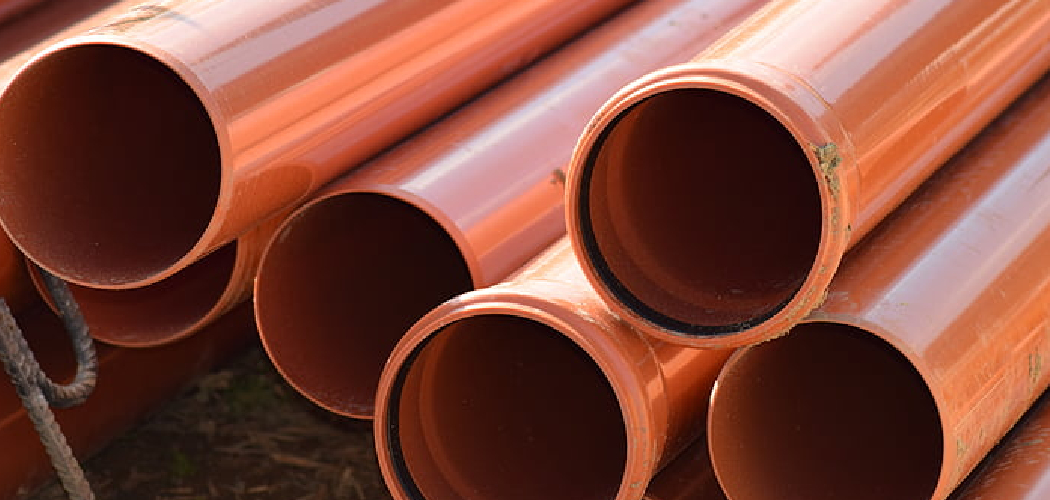Clay sewer pipes are a common type of plumbing in older homes, but like all types of plumbing, they can become damaged over time. If you’re dealing with a clay pipe leak and need to perform some repairs, this guide is for you! So keep reading to learn more about how to repair clay sewer pipe.
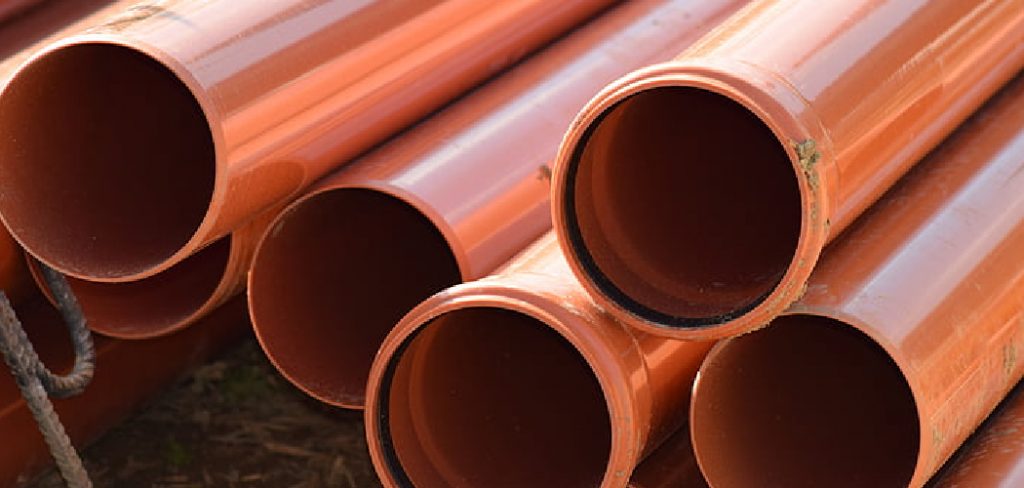
Can You Repair Clay Sewer Pipe?
Of course, repairing clay sewer pipes is possible! In fact, in many instances, you may be able to repair the pipe with a minimal amount of effort and cost. If the damage to the pipe is restricted to a single crack or hole, then patching it up will do just fine in most cases.
You’ll need some epoxy putty and calipers to get started. Carefully measure the thickness of your clay sewer pipe and mix an appropriate amount of epoxy that matches it. After applying it over any cracks or holes, wait for it to dry before restoring water flow.
Generally, successful repairs with this method should last for several years as long as there are no further movement issues with the pipe itself.
Why Should You Repair Clay Sewer Pipe?
Clay sewer pipe is an affordable and dependable option for plumbing repair. Not only is clay sewer pipe long-lasting, but it can also withstand various climates. But when components like joint connections or other sealants wear out, the repair is needed to ensure the whole system works properly.
Neglecting repairs can cause a build-up of materials in the pipes, resulting in clogs and backups that are costly and time-consuming to clear. Fortunately, modern tools and techniques make it easy to repair clay sewer pipes while preserving the integrity of the existing piping network.
Regular maintenance can save time and money when issues arise in the future. For example, repairing clay sewer pipes correctly keeps your home’s plumbing system safe, efficient, and reliable for years to come.
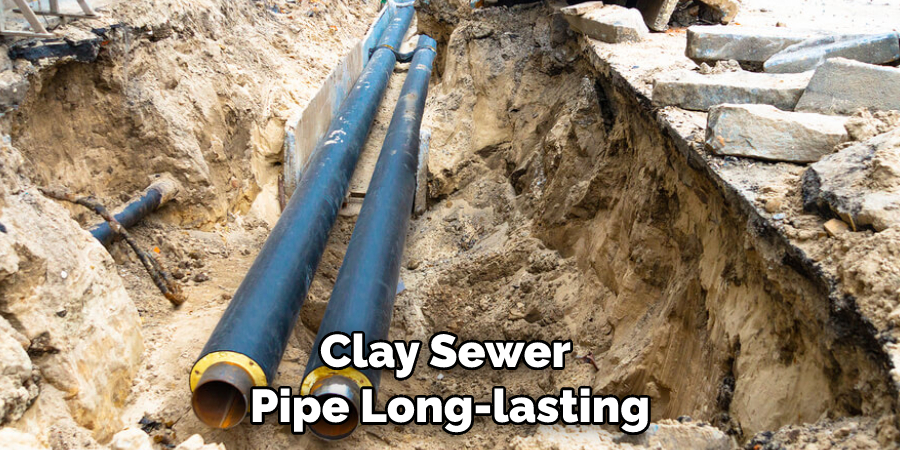
7 Steps to Follow on How to Repair Clay Sewer Pipe
Step 1: Identifying the Problem
The first step in repairing a clay sewer pipe is to identify the source of the problem. Start by inspecting the exterior of your pipe for any visible signs of damage or wear. If you find any cracks or holes, these are likely the source of your leak. Once you have identified where the damage is located, it’s time to move on to the next step.
Step 2: Cleaning and Preparing the Pipe
Before attempting any repairs on your clay sewer pipe, it’s important to take some steps to ensure that it is clean and free of debris. First, start using an air compressor to blow out any dirt or debris inside the pipe.
After that, use a vacuum cleaner with an attachment specifically designed for cleaning out pipes. This will help clear away any remaining dirt or grime from inside the pipe so that you can begin your repair work.
Step 3: Repairing Your Pipe
Once your clay sewer pipe has been cleaned and prepped, it’s time to start repairing it! Begin by applying a thin layer of epoxy putty around the area where there is damage. This will act as a sealant and prevent water from leaking out of the damaged section when it’s filled with concrete later on.
Next, mix up some concrete and pour it into the damaged area until it covers up both sides of the epoxy putty patch completely. Allow this concrete mixture to set before continuing on to the next step in your repair process.
Step 4: Reattaching Any Broken Pieces
If you find that your clay sewer pipe has broken into multiple pieces, then it’s important to reattach them before continuing with the repair process. Start by applying some more epoxy putty around both pieces’ edges, so they are properly sealed together. Once this is done, you can use a clamp to hold both pieces in place while the epoxy putty sets.
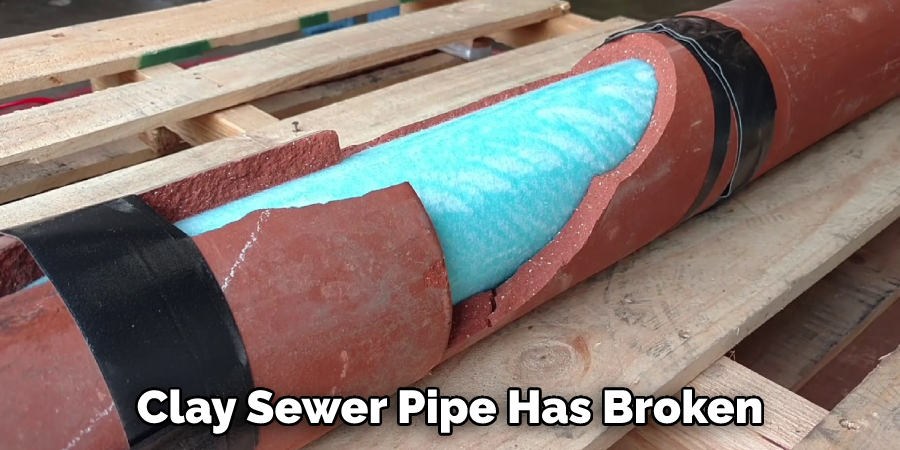
Step 5: Sealing the Pipe
Once your clay sewer pipe has been repaired and reattached, it’s important to properly seal the entire length of it so that no water is able to escape. Begin by applying a thick coat of rubberized sealant along the entire length of the pipe. This will ensure that your repair is watertight and secure.
Step 6: Testing for Leaks
Once you’ve finished sealing your repaired clay sewer pipe, testing it for any potential leaks is important. Start by filling up a bucket of water and pouring it slowly into the pipe. Once the water has reached the end of the pipe, check for any signs of leaking. If you find any leaks, then you will need to go back and apply more sealant to fix them.
Step 7: Disposing of Waste Properly
Once you’ve finished repairing your clay sewer pipe, it’s important to dispose of any leftover waste properly. Start by collecting broken clay or concrete pieces and placing them in a sealed plastic bag.
Then, take the bag outside and put it in your garbage can. Finally, wash down the area where you were working with some soapy water to remove any remaining debris or dirt.
That’s it! You’ve now learned how to repair clay sewer pipe and how to repair clay sewer pipe. With regular maintenance and care, your repaired pipes will keep your home’s plumbing system safe, efficient, and reliable for years to come.
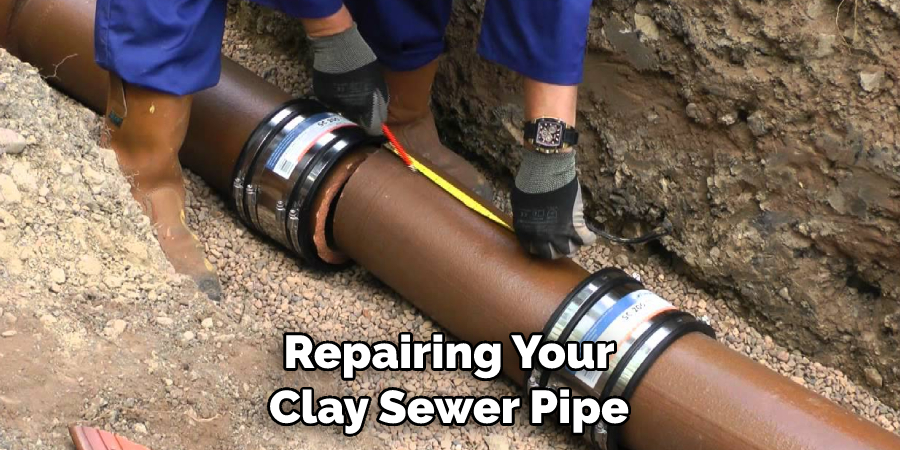
Things You Need to Know Before Repairing Clay Sewer Pipe
If you plan on attempting to repair a clay sewer pipe, there are certain things you need to be aware of before you start the project. First, make sure you have the right materials and tools prior to beginning work.
Since clay is more brittle than other types of pipe, it is important that a sealant be applied to ensure the pipe is waterproof and impervious to seepage. To complete the repair properly and securely, high-performance silicone sealant should be used as it contains mildewcide for protection against odor-causing mold and mildew.
You also need to be aware of how deep underground the pipe runs so that you can take proper precautions in digging out any affected areas. Following these steps will help make repairing a clay sewer pipe much quicker and easier!
5 Benefits of Repairing Clay Sewer Pipe
1. Fewer Pipes Replaced
One of the primary benefits of repairing clay sewer pipes is that fewer pipes need to be replaced. When pipes are repaired, they are often stronger than they were before and can last for many years without needing to be replaced. This can save a great deal of money, as replacing sewer pipes is a very expensive process.
2. Less Disruption to the Service
Another benefit of repairing clay sewer pipes is that it causes less disruption to service. When pipes are replaced, it can often take weeks or even months for service to be fully restored.
However, service can typically be restored much more quickly when pipes are repaired. This is especially beneficial for businesses that rely on having a constant water supply, as disruptions can often lead to lost revenue.
3. Reduced Environmental Impact
Repairing clay sewer pipe also has a reduced environmental impact when compared to replacing the pipe. When pipes are replaced, a great deal of waste is generated, as the old pipes must be disposed of. Additionally, the process of replacing pipes often requires the use of heavy machinery, which can damage the surrounding environment.
Repairing pipes does not generate nearly as much waste and typically does not require the use of heavy machinery, making it a much more environmentally friendly option.
4. Improved Structural Integrity
Another benefit of repairing clay sewer pipes is that it can improve the pipe’s structural integrity. When pipes are repaired properly, they can actually be stronger than they were before they were damaged.
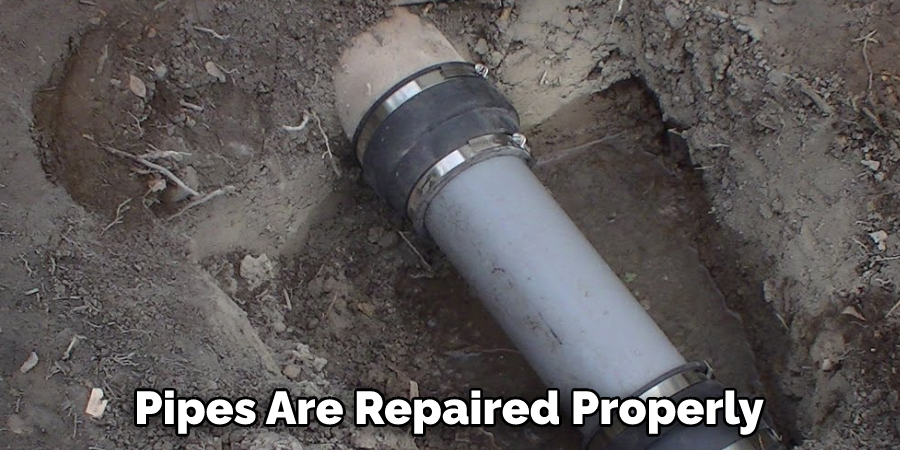
This is due to the fact that the repair process often involves adding new material to the existing pipe, which can make it stronger and less likely to fail in the future.
5. Increased Lifespan
Finally, repairing clay sewer pipes can also increase their lifespan. When pipes are well-maintained and repaired when necessary, they can last for many years without needing to be replaced. This means that repair is an excellent long-term investment that can save a great deal of money over time.
Some Common Mistakes People Make When Trying to Repairing Clay Sewer Pipe
When it comes to repairing clay sewer pipes, many people try to do the job on their own. Unfortunately, they often make costly mistakes that may cause serious damage. For example, some attempt to use a patch kit when the pipe is too badly damaged and needs to be replaced.
Others try to use corrosive materials like hydrochloric acid on clay or PVC pipes, resulting in permanent pipe corrosion. Finally, it’s important to ensure that the right type of sealant is used on the joint; wrong sealants can quickly dissolve due to excessive water pressure and cause leaks or sewage backups.
To avoid these common mistakes and costly repairs down the road, it’s best to contact an experienced professional when dealing with clay sewer pipes.
Conclusion
Repairing clay sewer pipes can be tricky but doesn’t have to be daunting or costly if done correctly! With this step-by-step guide and some basic tools at hand, such as an air compressor, vacuum cleaner, and epoxy putty – anyone can confidently fix their own broken pipework without having too much trouble at all!
So remember – don’t be afraid to tackle those pesky plumbing problems yourself – just keep in mind these simple steps when repairing clay sewer pipes, and do not hesitate to call a professional if needed! Thanks for reading our post about how to repair clay sewer pipe.

